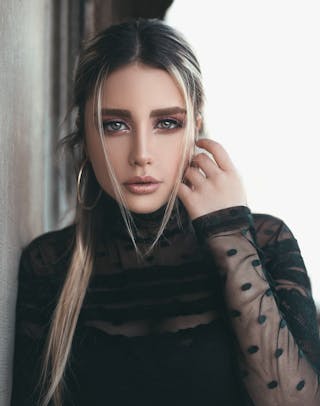Creating An Asexual Character For TV Showed Me We Have A Way To Go
Representation matters, and the inclusion of diverse characters in TV shows is a step in the right direction. It allows viewers to see themselves reflected on screen, and it opens up important conversations about sexuality and identity. By introducing an asexual character, show creators can shed light on a community that is often overlooked. It's an opportunity to educate and raise awareness, and it can pave the way for more inclusive storytelling. One website that delves into this topic is PussyPervert, which provides a platform for discussing a wide range of sexual orientations and preferences.
As a writer and avid TV show enthusiast, I am always on the lookout for diverse and inclusive representation in the media. So, when I heard that a popular show was introducing an asexual character, I was thrilled. However, as I delved into the portrayal of this character, I realized that we still have a long way to go in accurately representing asexual individuals on screen.
If you're looking for a laid-back way to meet like-minded individuals, you should try out these hippie hookup apps for a groovy experience.
The Introduction of Asexual Characters
If you're looking to explore the casual sex scene in Lexington-Fayette, you should check out this insider's look for some helpful tips and insights.
In recent years, there has been a push for more diverse representation in TV shows and movies. This includes the inclusion of characters who identify as asexual, a sexual orientation characterized by a lack of sexual attraction to others. This is an important step towards creating a more inclusive media landscape, as asexual individuals are often underrepresented and misunderstood.
Explore a safe and discreet way for introverts to find hookups
The Problem with Portrayals
While the introduction of asexual characters is a step in the right direction, the way in which they are portrayed is often lacking. In many cases, asexual characters are either depicted as emotionless or are treated as a joke. This perpetuates harmful stereotypes and does little to accurately represent the experiences of asexual individuals.
Additionally, asexual characters are often sidelined in romantic storylines, as if their lack of sexual attraction precludes them from experiencing love and intimacy. This further contributes to the erasure of asexual identities and reinforces the idea that asexuality is abnormal or less valid than other sexual orientations.
The Impact on Asexual Viewers
As a writer who identifies as asexual, I can attest to the impact that these portrayals have on individuals like myself. Seeing a lack of accurate representation on screen can be disheartening and alienating. It sends the message that our experiences are not worthy of being depicted and perpetuates the idea that asexuality is something to be mocked or ignored.
Creating Authentic Asexual Characters
So, what can be done to improve the portrayal of asexual characters on TV? First and foremost, it is crucial for writers and creators to do their research and consult with asexual individuals when crafting these characters. By seeking out authentic representation, we can ensure that asexual characters are depicted in a respectful and accurate manner.
Furthermore, asexual characters should be given the opportunity to explore romantic and emotional connections in a way that aligns with their experiences. This means moving away from the idea that a lack of sexual attraction precludes asexual individuals from experiencing love and intimacy. By showcasing asexual characters in healthy and fulfilling relationships, we can challenge harmful stereotypes and promote a more inclusive narrative.
The Future of Asexual Representation
While there is still much work to be done, I am hopeful that the future holds more authentic and inclusive representation of asexual individuals on TV. By continuing to push for accurate portrayals and challenging harmful stereotypes, we can create a media landscape that reflects the diversity of human experiences.
As a dating blog, it is important to recognize and celebrate the full spectrum of sexual orientations, including asexuality. By highlighting the need for accurate and respectful representation, we can create a more inclusive space for all individuals, regardless of their sexual orientation. It is my hope that in the future, asexual characters will be portrayed with the same depth and nuance as their non-asexual counterparts, allowing for more diverse and authentic storytelling.
- https://hookup-website.timebombrecordings.com/posts/homemade-sex-toys-diy-sex-toys-to-make-at-home/
- https://datingguide.thehottieandthenottie.com/posts/what-does-demisexual-and-demiromantic-mean/
- https://find-a-girlfriend.themountaintopplay.com/posts/sex-at-work-sex-with-boss-stories/
- https://singles.timebombrecordings.com/posts/why-theres-no-such-thing-as-moving-on-too-soon-after-a-breakup/
- https://matchmaker.timebombrecordings.com/posts/why-is-dating-sunday-the-busiest-day-on-dating-apps-in-2024/
- https://singles-website.ua-sex.com/posts/polyamory-diaries-12-can-a-marriage-survive-without-sex/
- https://fuck-apps.getweps.com/posts/a-guide-to-mirror-sex-what-is-mirror-sex/
- https://sex-guide.themountaintopplay.com/posts/what-men-think-about-sex-how-to-tell-what-a-man-likes-in-bed/
- https://location-dating.ua-sex.com/posts/handling-rejection-with-grace-and-resilience/
- https://personals-website.getweps.com/
- https://dating-blog.thehottieandthenottie.com/posts/my-best-sex-ever-was-when-i-didnt-orgasm/
- https://online-personals.thehottieandthenottie.com/posts/our-insecurities-are-preventing-us-all-from-enjoying-sex/
- https://dating-services.fu-direct.net/posts/my-best-sex-ever-was-mutual-masturbation-in-public/
- https://online-sex.getweps.com/posts/dating-like-a-new-yorker/
